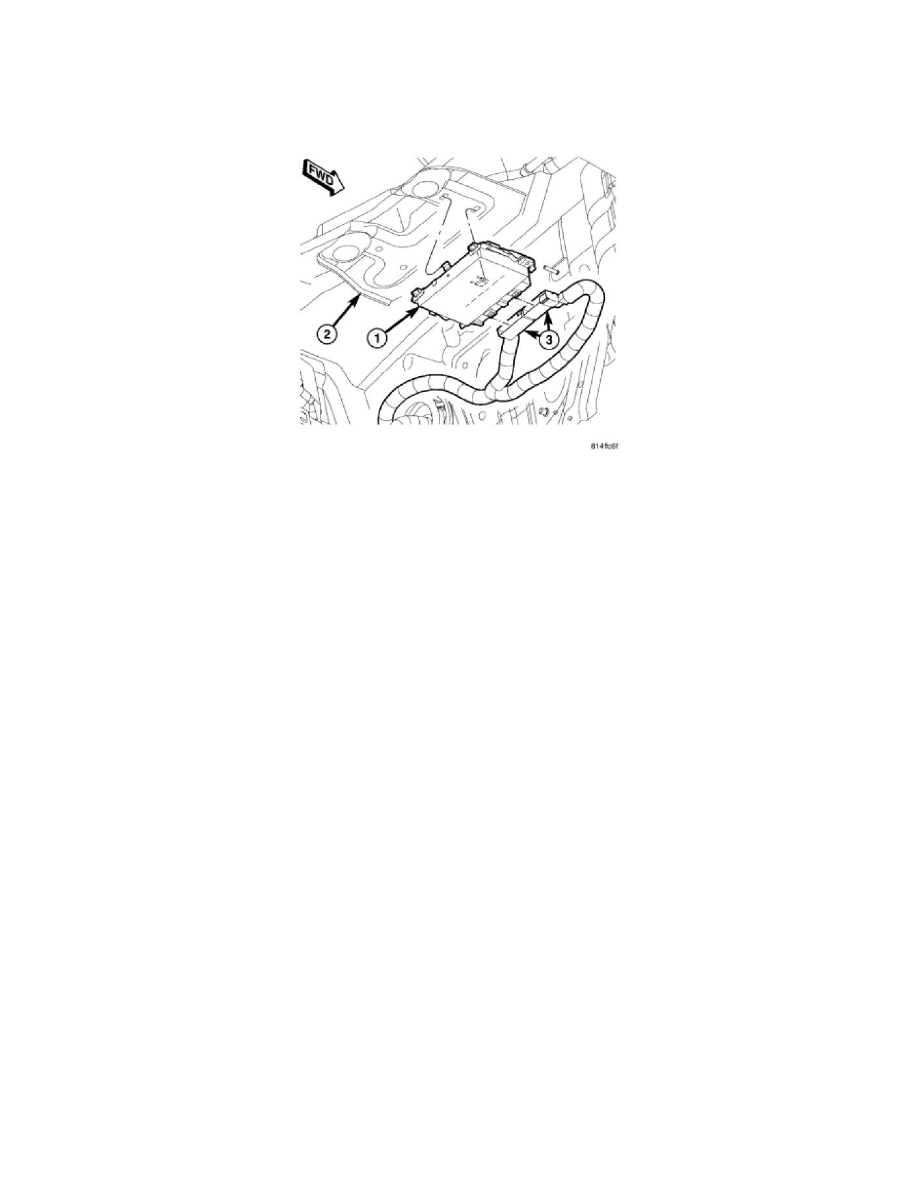Grand Cherokee 2WD V6-3.7L (2008)

Control Module: Description and Operation
Transmission Control Module - Description
3.7L GAS/3.0L DIESEL VEHICLES
The transmission control module (TCM) (1) is mounted to the dash panel (2), under the dash panel silencer pad, just to the right of the steering column.
The electronic control system consists of various components providing inputs to the TCM. The TCM monitors transmission sensors, shifter assembly,
and bus messages to determine transmission shift strategy. After shift strategies are determined, the TCM controls the actuation of transmission
solenoids, which controls the routing of hydraulic fluid within the transmission, by moving a sequence of four valves to make a shift occur.
The system performs its functions based on continuous real-time sensor feedback information. In addition the TCM receives information from the rest of
the vehicle over the CAN C bus. The CAN C bus is a high-speed communication bus that allows real time control capability between various controllers.
Most messages are sent every 20 milliseconds. This means critical information can be shared between the transmission, engine, and ABS controllers. The
CAN C bus is a two wire bus with a CAN C Bus (+) circuit and a CAN C Bus (-) circuit. These circuits are twisted pairs in the harness to reduce the
potential of radio and noise interference.
The transmission control system automatically adapts to changes in engine performance, vehicle speed, and transmission temperature variations to
provide consistent shift quality. The control system ensures that clutch operation during up-shifting and downshifting is more responsive without
increased harshness. The TCM activates the solenoid valves and moves valves in the valve body to achieve the necessary gear changes. The required
pressure level is calculated from the load condition, engine speed. Vehicle speed (from ABS module) and transmission oil temperature, matched to the
torque to be transmitted. Power for the transmission system is supplied through the shifter mechanism (no transmission control relay).
